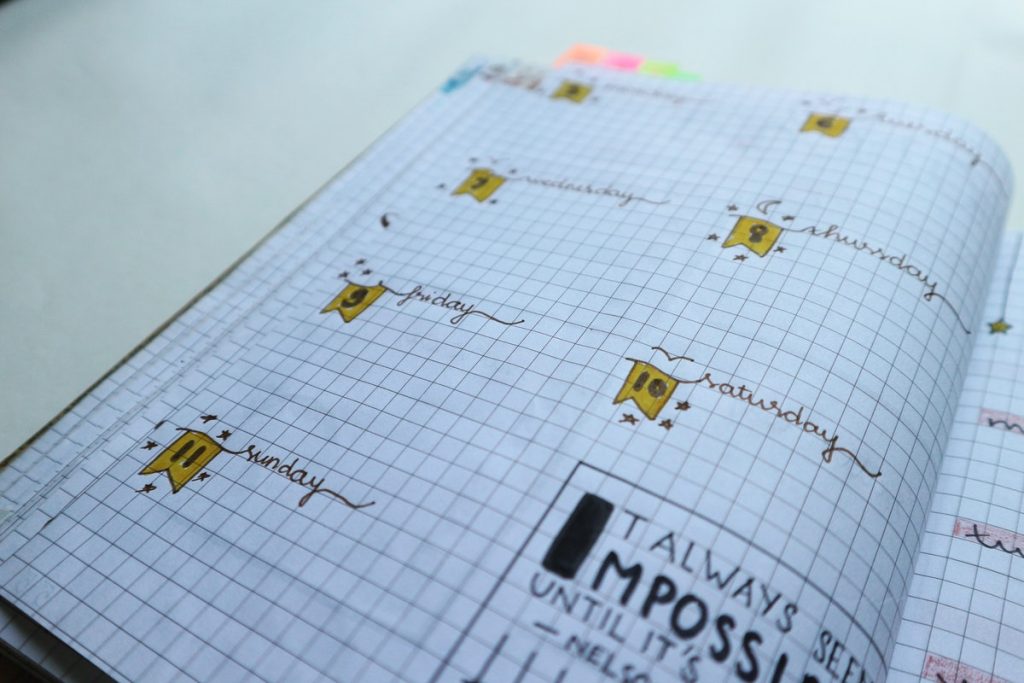Once you are in college or university, you may not know the different types of assignments that you will do. Neither you will know the different types of papers that you have to write while you are in college. As a student in college, you may know what an essay is and how to write a lab report but when you are asked to write a research proposal, case study, or a dissertation paper, things may blur out a little. But you do not need to worry. Because we have got your back. With that being said, if you want to learn how to write a PhD research proposal, here is the best guide to help you write the best research proposal.
Dissertation Presenting Tips To Master For Ph.D. Students
What is a Research Proposal?
Most universities require the applicant to write a research proposal when they are applying for a PhD degree. A research proposal is a short piece of writing that explains what you will be covering in your research project.
After your bachelor’s degree, if you choose to continue your academic journey, you will be asked to write a research proposal for your master’s thesis, dissertation, and all the other kinds of research that you will be conducting.
Furthermore, a research proposal is generally a 3,000 to 4,000-word long paper that outlines the research that you are going to conduct. Nevertheless, the length of the research paper varies from research to research. Besides, a research proposal for a bachelor’s degree thesis is a few pages long while the research proposal is longer and more detailed.
What is the Goal of a Research Proposal?

If you are wondering why you need to write a research proposal, here are a few reasons that you need to write a research proposal. When conducting research, the main purpose of writing a research proposal is to:
- Present your plan for the research that you want to conduct.
- Secure funds for your research.
- Approve their research by their supervisor or department.
- Convince the reader that your project is important and interesting.
- Show that you have enough knowledge about your field of study.
- Understand the current state of the research on your topic and you can support your ideas academically.
- Lastly, show that your research can be practically conducted within the present constraints.
How to Choose a Research Topic?
If you do not know how to choose a research topic, here are some tips that might help you.
- Read a lot of materials to find what you are passionate about.
- Try reading journals and theses related to your field of study.
- While reading papers, journals, and theses; take notes and list down some topics that you find interesting.
- Also, try asking questions while reading and taking notes.
- Narrow down a research question and be realistic and specific about what you can do and what you can not do.
- Be flexible. Because while doing your research, you may want to introduce some changes to your original topic or question.
- Lastly, make sure that you are up to date no matter how busy your schedule might look. Always have an eye out for the latest developments in your field. This will make sure that your question has not been already addressed by any other researcher.
How to Write a PhD Research Proposal
Now that you know what a research proposal is and what is its purpose, you are good to start learning how to write a research proposal. Generally, a research proposal has the following elements.
- Title page
- Abstract and table of contents
- Introduction
- Literature review
- Research design and methods
- Implication and contribution to knowledge
- Conclusion
- Bibliography
- Research Schedule
Title Page
Like a dissertation or thesis, the research proposal also has a title page. Generally, the title page of a research proposal includes the following details.
- The title of the project
- Writer’s name
- Supervisor’s name
- Name of the institution and department
Furthermore, you can also ask your supervisor or department to check whether or not there are any other requirements too.
Abstract and Table of Content

If your research proposal is very long, you are advised to include an abstract and a table of content to make sure that navigation through your paper is easy. An abstract is a short review of what is the paper about while a table of content is a list of everything that the writer has included in the paper.
Introduction
The introduction is the first part of your research proposal. It is the most important part of your paper. So, make sure that it is strong enough to capture your reader’s attention and make them stick to the end of the paper. Furthermore, the introduction should:
- Introduce the subject or topic of your research
- Give some background and context regarding your topic
- Highlight your research question
To make sure that your reader instantly decides to continue reading your paper, you have to craft a strong introduction. Here are some questions that you can ask to write a strong introduction.
- What is the significance of my research?
- Who has an interest in the topic of my research?
- How much information is already known about the topic of my research?
- What is unknown about the topic of my research currently?
- What are the possible insights that my research can contribute?
Moreover, if your research proposal is very long, you might have to include a separate section for background and context. Similarly, in the case of a long research proposal, you can also include a separate section for aims and objectives.
How to Write a Term Paper – The Best Step by Step Guide
Background significance
In this section, you try to explain why your research is crucial and how it relates to existing research in your field. So, your research might complement or challenge the existing research in the field.
Moreover, here you define the existing problems and problems that your research is going to address. The purpose of doing so is to explain why your research is necessary. In other words, this is where you answer your reader’s “So what?”.
In addition to that, you will also outline your research methodology or how you will conduct it. Furthermore, you can also add questions, in this section, that you will not be covering in your research if required.
Literature Review

Besides your practical work, it is also important to show your readers that you are familiar enough with research on your topic. By writing a strong literature review, you tell your readers that you have a strong foundation of theoretical knowledge about your project.
Besides, a strong literature review also tells the reader that you are not going to repeat what others have already done. Moreover, you enlist all the sources that you are planning to use in your research. This includes studies, research papers, data, books, and articles.
Also, remember that a literature review is not just a list of sources that you will use. It is rather an explanation of why you are using these sources. So, you should show how your research will contribute to the field by telling your reader:
- What are the main theories, debates, and controversies regarding the topic or the field
- What are the strengths and weaknesses of all the different approaches?
- Will your research contribute, challenge, or synthesize others’ work.
Research Design and Methods
The next section of your research proposal is the research design, methods, and schedule section. In this section, make sure that you cover the following elements:
- What type of research are you conducting (quantitative or qualitative research)?
- Are you collecting original information and data or working with data that others have already collected?
- Whether you are doing descriptive, correlation, or experimental research?
- What type of data you are working with? For instance, if you are doing research in the social sciences, you will have to describe the population you are working on. Besides, you will also need to describe your subject and how you will gather data from them.
- How much time do you need to collect data?
- Describe the tools that you will use to collect data. Will you do experiments, surveys, or observe phenomena?
In addition, the research design, methods, and schedule section also include:
- The research timeline
- Your potential budget
- Whether there are any potential obstacles? If yes, how do you plan to tackle them?
How to Write a Research Paper Outline in English
Suppositions and implications
While learning how to write a PhD research proposal, one of the most important steps is suppositions and implications. This is the step where you tell your reader that your work is important.
Although you do not know the results of your research before you start your work, you should start your research with a clear idea of how your research will contribute to the field. Therefore, this section is the most important section of your research proposal. Because it gives an ultimate answer to why your research is important.
So, make sure that you are covering the following points in this section.
- Are there any ways that your work can challenge any existing theory or research in your field?
- Will your work be able to create a foundation for future research and work? If yes, how.
- What is the practical value of the results that scientists, practitioners, and educators can use?
- Are there any obstacles or problems that your work can probably face?
- How to implement your finding in academia and other fields and how will they improve the settings?
In other words, you explain how your research results will create an impact rather than just enlisting the results.
Conclusion
This is the section where you wrap it all up. Just like the concluding paragraph in your essay, the conclusion in your research proposal briefly summarizes everything and reinforces your research’s goal. The key here is to keep it brief and straightforward. Besides, do not introduce any new argument in this section.
Bibliography
In addition to writing a literature review, you must also prepare a bibliography. Your bibliography does nothing more than identifying the sources you used and their authors, as opposed to your literature review, where you discussed the significance of the sources you selected and occasionally disputed them.
The style manual you’re using will determine how you should format a citation. The three most popular academic style manuals are MLA, APA, and Chicago, and each has its specific guidelines and specifications. Remember that every citation format has unique rules for crediting sources of all kinds, including images, websites, talks, and YouTube videos.
A comprehensive bibliography is not always necessary. A references list, which is just a condensed list of all the sources you used in your work, might be included in this situation. Ask your supervisor for advice if you’re unsure which to write.
If you do not know how to write a bibliography, click on the link below.
How to Write an Annotated Bibliography
Research schedule

The last step of learning how to write a PhD research proposal is to write a research schedule. In some circumstances, you might need to provide a thorough project timetable that details exactly what you’ll accomplish at each stage and how long it will take. To determine whether this is necessary, check the requirements of your program or funding source.
Common Mistakes that You Should Avoid When Writing a Research Proposal
Now that you know how to write PhD research proposal, you should also learn how to write a strong research proposal. While writing your research proposal, avoid the following mistakes to make sure that you are writing a strong research proposal.
- Being too wordy: While writing your research proposal or any type of paper, try being as brief and to the point as possible. The more briefly you can express the goal of your paper, the better it is. After all, we all would agree that formal does not mean flowery.
- Failing to cite relevant sources: While conducting your research, you are working on the existing knowledge in your field. So, you should remember to add a reference to all the sources that you have used. It will not only connect your work with already existing research but also show your work’s relevance and demonstrate your familiarity with your field.
- Focusing too much on minor issues: There are probably a lot of reasons why your work is necessary. However, enlisting all of them will only waste your time. Therefore, take your time and only add a few major reasons.
- Failing to make a strong argument for your research: In essence, a research proposal is a persuasive piece of writing. Therefore, you have to make sure that you have a strong argument. So that your reader says “Yes” instantly.
You can read more about:
- How to Write a Term Paper – The Best Step-by-Step Guide
- The Step-by-Step Guide to Create a Money-Making Blog
- How to Write a Research Paper Fast – Step by Step Guide
- Best Personal Statement Examples
- Why New Businesses Fail – 8 Common Reasons

